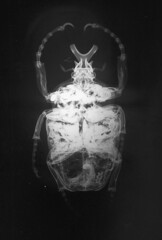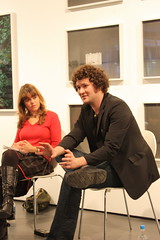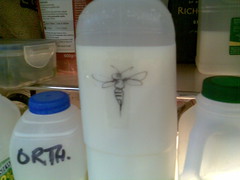 This is a bit of a 'dump all the links in one place' page for people who may be interested in the specimen of Goliathus goliathus that has most probably been shot.
This is a bit of a 'dump all the links in one place' page for people who may be interested in the specimen of Goliathus goliathus that has most probably been shot.The original article by Conrad Gillet is available in Scarabs:
"The obvious puncture marks and cracks breaching its armour are, I believe, tell-tale signs that the last thing this particular beast saw was the wrong end of a Victorian big game hunter’s blunderbuss!"
Max Barclay (Twitter) had pointed this out to me a while ago, and I introduced Max and Heather Bonney (Twitter) one evening in The Queen's Arms. Then the BBC got involved and the story became a bit of a hit (even if I have not been mentioned to date, anywhere!). Eventually we will write up a more scientific account of the story for publication.
It should be pointed out that there are some extra points that have not been published anywhere to date, and we would like to (and plan to) do some further investigations.
There are some Flickr photos I took while Heather and I figured out the best settings for the x-ray machine.
The Natural History Musuem's press release can be downloaded here: Who Shot Goliath.
Further press coverage is available here:
- Metro
- New Scientist - has stupid URL structure, you will need to go back to 11th March 2010 if they have added new images since I made this post.
We like publicising our science, and Twitter is great. Although sometimes I can't help thinking I should have paid more attention to Twitter at the time!
Please leave links to any missing resources as a comment!

